The Single Woman Finds Her Genre
The mid 1990s saw the advent of a new fiction genre: chick lit. One of the many socio-cultural conditions for its emergence was the steadily increasing median age at first marriage in western countries. Since the 1970s, the period between the end of the teens and the phase of life that traditionally involves marriage and children had gradually expanded by a decade or more. In addition, women had entered the labour market and were now a growing economic force. These two factors, plus sexual emancipation, underlie the development of a new consumer-oriented urban lifestyle with dating and successive partners – the so-called singles culture.
Chick lit is singles culture – with the new women’s and gender roles that entails – articulated in popular literature. As epochal literary form, it catches the young single women’s time-specific empirical world and makes it the object of depiction. Chick lit gives the single woman her own genre.
The genre is closely linked to contemporary materialistic consumer culture fetishising designer goods and brands. It is natural to see the advent of chick lit as connected with the economic upturn of the 1990s and the abundance of money and raging materialism that followed in its wake. The bubble economy burst in 2008, a year that also marked the beginning of the end for chick lit.
From Newspaper Columns to International Bestsellers
It all began with a few newspaper columns in New York and London. Journalist Candace Bushnell (b. 1958) wrote a weekly column in The New York Observer from 1994 until 1996: edgy, ethnographic reports from Manhattan about white single women’s lives, dating, and sex at a time when no one – this was the point of view – believed in love any longer. The columns were published in book form in the US in 1995, entitled Sex and the City. That same year, in London, journalist Helen Fielding (b. 1958) was writing a newspaper column in The Independent, consisting of simulated diary entries by the 30-something singleton, Bridget Jones, published as a book, Bridget Jones’s Diary, in 1996.
The new genre of chick lit touched a major chord with women readers. By 2001, when the film version was released, the first Bridget Jones book had already sold more than ten million copies internationally and had been translated into 33 languages. The television series based on Sex and the City – a less disillusioned version of the book – went from strength to strength around the entire western world from 1998 to 2008. The 2000s saw the publication of a steady stream of novels, frequently furnished with a pastel or pink cover, showing a young, dynamic urban woman dressed in stylish clothes and high heels – inspired by the four glamorous friends in SATC and/or the less polished Bridget Jones.
More Chick than Lit?
In 2007, Bridget Jones’s Diary was one of The Guardian newspaper’s “10 books which the public felt best defined the 20th century”! Chick lit’s commercial success and its impact on readers have caused some literary critics to see it as a “pink menace […] staging a coup upon literary seriousness”. Author Doris Lessing has publicly decried Bridget Jones and her kind, saying that it would be better if the chick-lit writers “wrote books about their lives as they really saw them, and not these helpless girls, drunken, worrying about their weight, and so on.” (John Ezard: “Bainbridge tilts at ‘chick lit’ cult”. The Guardian, 24.08.2001)
But what if chick lit actually does show us how young women view their lives? This may well be the case. Millions of women have bought these books and have, we must assume, recognised their own dilemmas and issues in them; they have identified with the central characters and seen their own lives reflected in these fictional lives. It is easy to scorn popular literature, but it often has something significant to tell us about the times in which we live. Chick lit reveals something about how young women experience life as women in the 1990s and 2000s, and it should be read in that light.
Chick Lit and Feminism
Chick lit’s relationship to feminism is a disputed area. Is it selling off the emancipatory family silver of the 1970s, or does it rest on feminist building blocks such as the liberated attitude to sex and the critical appraisal of men? The point of view here is that chick lit draws on the legacy from women’s liberationists, but with the crucial feature that traditional feminist values are embedded in a new female consciousness that has taken its contemporary values and ideals on board. On the one hand, chick-lit women can thus take a highly critical view of women’s role and, on the other hand, they are characterised by a form of moral ‘corruption’; they have, as it were, absorbed the calculating market mindset and made it their own.
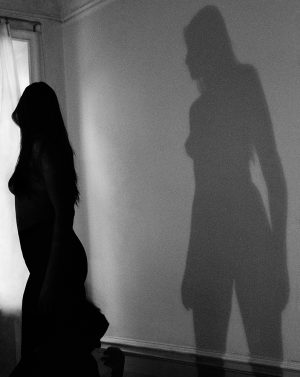
Chick-lit women are well aware that they have a stake in the system from which they suffer and this knowledge is added to the original feminist experience. The resulting duality manifests itself in a strong ambivalence vis-à-vis moments of oppression in women’s role. The chick-lit women are not oblivious to these factors, but they are painfully aware of their own stake in them. This internally experienced tension makes any potential criticism fizzle out almost before it has been expressed, inherently curbing the female protagonists’ enterprise.
Chick Lit in the Nordic Countries
Chick lit is primarily a British and American genre. In the Nordic region, the most popular writers in the genre are also international names such as Marion Keyes, Sophie Kinsella, Jennifer Weiner, Lauren Weisberger, Lisa Jewell – plus, of course, Helen Fielding and Candace Bushnell. I consider Bridget Jones’s Diary as archetypal chick lit and, in the same vein, view the Danish Nynnes dagbog (2000; Nynne’s Diary) as the best shot at a Nordic chick lit novel.
The latter is very close to the ’prototype’, Bridget Jones’s Diary, but given that we are dealing with genre fiction, the issue of originality is less relevant. The novel exhibits the brilliance of language and burlesque humour that are vital for successful chick lit. The emphasis in the following analysis will therefore be on Nynnes dagbog (vol. 1), with a few Swedish and Norwegian novels called upon in order to shed light on the genre in the Nordic region.
It Begins with a Woman in Crisis…
Nynnes dagbog was also originally a weekly newspaper column in Politiken, from August 1999 to August 2000. Written by journalists Henriette Lind, Lotte Thorsen, and Anette Vestergaard, the diary about a woman called Nynne was then published in book form. It was an immediate success and was also published in Norway and Finland, selling a good half million copies.
Just like popular romantic fiction, of which chick lit can be seen as an updated, more realistic version, the plot is: the pursuit of a man. The novels open with a state of play in which the main character’s sense of self-worth is in tatters. The boyfriend, or the guy she has been dating, has dumped her. In Nynnes dagbog, Nynne wakes up on her 35th birthday with an insane hangover and a fresh, open wound: her ex-boyfriend, Djøf – they had been a couple for a number of years and lived together until recently – has been spotted gawping at maternity clothes in the city centre with his new girlfriend, the 23-year-old advertising assistant with slim hips!
“I can’t bear it”, is Nynne’s reaction to the news. Impulsive, sensual, mildly chaotic Nynne feels that she fails utterly in terms of the ideal woman as embodied by the advertising assistant: young, on top of things, slim hips, and thin! Moreover, as if that were not enough, she has managed, in just three months, to convert the not exactly child-loving Djøf into a dad-to-be!
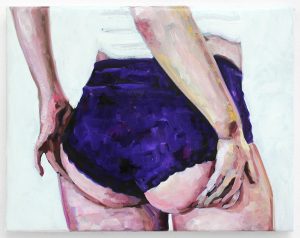
In relation both to conventional ideals of beauty and to the traditional female role as mother and wife, Nynne feels a failure. At the same time, it has to be noted that the news about her ex-boyfriend does not rankle Nynne because she is desperate to have children; it is because of affirmation: the affirmation a woman takes from a man choosing her as mother of his children. Nor does Nynne’s sense of failure lead to a questioning or a critique of the female ideal that makes her feel inferior. Anger is not an option, because Nynne herself is looking out through the kind of ruthlessly appraising eyes by which she feels she is being evaluated and – in this case – rejected. She dulls her pain by getting plastered and the next day, when picking over the news, by assuming the foetal position on the sofa with a gossip magazine and a large bag of cheesy Wotsits!
…And It Ends with a Man
The novel follows Nynne through four relationships: an affair with her colleague, Flemming Ø, a one-night stand with a married lecturer, totally falling in love with the artist, Samuel, and a brief relationship with a Kurd called Khalim. None of these relationships last: Flemming Ø. is undone by his self-centred virility and the married lecturer only wants a mistress. Samuel, on the other hand, lives up to Nynne’s dream picture of a boyfriend, whose looks and social status turn other women green with envy. Plus, he is good in bed. It turns out, however, that he is married and, what is more, he insists on coming and going as he pleases. Nynne goes through one humiliation after the other, breaks up with him, and quickly goes back to him.
It is the serious illness of Nynne’s best friend, Anders, which makes her split from Samuel for good. Samuel puts his own needs above Nynne’s wish to look after Anders: “I NEED LOOKING AFTER, TOO”, he bellows when Nynne asks, if maybe he could put himself on pause for two minutes. It is a similar story when Nynne breaks up with Khalim: he goes on about how she has violated his honour. The novel’s take on Samuel and Khalim clearly registers their egocentricity. The men’s own needs claim centre stage rather than consideration of and care for Nynne. Nynne finally sees this with crystal clarity and this realisation makes her turn her back on the men.
The Emotional Fuckwit
In Bridget Jones’s Diary, Helen Fielding introduced the concept of “the emotional fuckwit”, thus defined: “As women glide from their twenties to their thirties, […] the balance of power subtly shifts. Even the most outrageous minxes lose their nerve, wrestling with the first twinges of existential angst: fears of dying alone and being found three weeks later, half-eaten by an Alsatian. […] And men like Richard […] play on the chink in the armour to wriggle out of commitment, maturity, honour and the natural progression of things between a man and a woman.”
It is feminist Sharon, who voices this theory to the group of female friends during a coffee meeting and Bridget’s immediate reaction is to shush her, because: “After all, there is nothing so unattractive to a man as strident feminism.” However, Bridget takes the theory on board and uses it as a yardstick with which to assess suitability as boyfriend material. As she is about to lose her skirt and have sex with Daniel, her boss, on whom she has a major crush, he whispers: “This is just a bit of fun, OK? I don’t think we should start getting involved.” Sharon’s words immediately ring a warning in Bridget’s ears, she pulls up her skirt and stalks out of the bedroom with the feminist parting shot: “I am not interested in emotional fuckwittage.”
If there is one chick-lit truth that is never disputed, it is that men hate feminists. Nonetheless, there is a women’s lib legacy in Bridget’s and Nynne’s way of reacting. A critically-revealing gaze on the man may take its time to get going because affirmation from men is utterly vital to the female protagonists. However, the text builds up to the onset of this awareness, and it is from this point of view they eventually choose the man who, according to the normative parameters in the novel, is the right one for them. A man who is sensitive without being infantile, who is mature, understanding, considerate, and who regards a woman as an equal partner.
Love and Achievement
Here we will briefly dwell on Swedish chick-lit queen Kajsa Ingemarsson’s novel, Små citroner gula (2004; Yesterday’s News, 2013), and look at its presentation of the relationship between achievement and love. In the first chapter of the novel, and in absolute accordance with the precepts of the genre, Agnes is dumped by her immature musician boyfriend. At the same time, due to her boss’s attempt to rape her (!), she is forced to give up her job at a posh restaurant in Stockholm. Having tired of his new girlfriend with the big breasts, Agnes’ ex wants to resume their relationship, and even though her female friends urgently advise her against doing so, she lets him move back into her apartment.
The story of development, which is more evident in this novel than in Nynnes dagbog, consists of Agnes deciding to fulfil her dream of having her own restaurant. For months, she works night and day and, while her dream is taking shape, she builds up the self-worth that enables her to get wise to how her boyfriend is exploiting her – and she sends him packing. The rather unassuming chap living next door, David, who has been of support to her along the way, turns out to be a restaurant critic on a major newspaper. Agnes gets her professional accolade – and a boyfriend into the bargain – when David writes a genuinely enthusiastic review of her restaurant, and customers start coming in droves.
Using Små citroner gula as one of her references, Lisbeth Larsson, a Swedish Professor in Comparative Literature, has characterised chick lit as ‘feminism lite’. Where the woman in older popular romantic fiction had to stand up for love, the chick-lit heroine of our day has to stand up for herself. She has to be able to take care of herself, show that she can deal with the challenges of urban life while pursuing the dream of Mr Right. Lisbeth Larsson: “Från rådgifvare till Chick-lit. Den romantiska berättelsens förändringar”. Litteraturvetenskapeliga institutionen, 2007)

This is also the case in the Norwegian novel, På høye hæler over Grønland (2009; Crossing Greenland in High Heels), by Siri Østli. Here, the heroine is split into two out-and-out chick-lit types: sex-and-the-city Iselin, a stylish career-driven lawyer who drives a Mercedes and swears by Chanel and YSL; and her friend Sofie, a plump, chaotic, and insecure Bridget-clone who, without knowing it, is in possession of a major creative talent. The premise of the story is that chilly Iselin, through a pregnancy, gets in touch with her frozen-up femininity and learns that there is more to life than career and shopping. Sofie, on the other hand, experiences some professional triumphs that give her the self-confidence necessary to start her own business – and to put her foot down in relation to the many men who exploit her. Just like Agnes in Små citroner gula, after many trials and tribulations, Sofie realises that the man in her life is actually the kind, rather nerdy – and in fact wealthy and successful – neighbour.
In the diaries of Nynne and Bridget Jones, on the other hand, work does not feature to any great extent – except as supplier of material for funny situations. Nynne and Bridget are ruled by their desires, and any kind of effort required by their job is often met with strong resistance. Nynne spends an entire day not preparing the important presentation she has to hold at work the following day. Bridget stays in bed, eats chocolate, and drinks wine, in order to repress thoughts about the press release that needs writing. Even though the two novels present the women as accident-prone, disorganised, and rather absent-minded at work, the overall picture is remarkable for not being identical with the sum of the episodes. Nynne’s boss praises her for the presentation – without further explanation of how she pulled it off. And Bridget ends up with the TV exclusive that every star reporter in London had tried to land.
On the plot level, the chick-lit heroine in these novels fails when faced with the demands for a professional performance; on the implicit narrative level, on the other hand, it is made quite clear that this picture of her as inadequate is far from representative of the truth. There is a striking discrepancy between the novel’s overarching contention of the heroine as brilliant and successful in her professional life and the actual events as depicted, and this brings out a fundamental feature of chick lit: being a child of popular literature, it contains elements of wish-fulfilment and fantasies of omnipotence.
In Danish Hanne Hedetoft’s Ellens elevator (2003; Ellen’s Lift), the trajectory follows the opposite route: towards greater realism. The novel is a polemic rejoinder to Bridget Jones’s Diary, inspired by the latter’s intertextual dialogue with Jane Austen’s Pride and Prejudice – albeit with its own particular spin on the romantic concept of love. The central character, Lis, a tough independent singleton, falls in love with the fictional character Heathcliff (!), the demonic hero of Emily Brontë’s Wuthering Heights. Following her friend Ellen’s intervention, she realises the illusion, or rather the ‘fiction’, in this kind of love, and is thereby able to meet a man in ‘real’ life and give in to the coupledom she has not previously believed possible.
Like the Norwegian and Swedish novels mentioned above, the plot device in Ellens elevator is that the female protagonist has to acquire a more realistic picture of love before she can identify her Mr Right. These three novels have a greater psychological complexity and a higher level of realism than Nynnes dagbog – presumably because they were written quite late in the genre’s life and are thus further removed from its foundational texts, Bridget Jones’s Diary and Sex and the City. After Nynnes dagbog, which was published in 2000, Nordic chick lit moves in the direction of the Bildungsroman in its more popular, feel-good-like variant.
“We Are All Kept Women”
Back to chick lit’s take on the man, which has an additional level to those already described. As we have seen, Nynne and her sisters have invested considerably in the system that represents their oppression. Nynne’s pet name for her ex-boyfriend, Djøf (acronym for the national union of lawyers and masters of economics, political and social science in Denmark), is an example of how the man’s value as boyfriend is inextricably bound up with his annual income and social status. When Nynne, having ruled Djøf out, resumes her hunt for a man, she does so wearing a newly-bought “sexy, black D&G bikini, in the hope that available men in salary grade 79 will look at that rather than a 35-year-old body”!
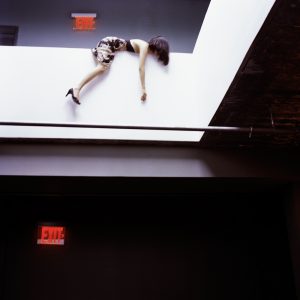
Chick-lit women are constantly wondering about the annual income of potential boyfriends. The capitalist logic has reached far into the heroines’ hearts, and sex is no longer based on establishing a deep emotional relationship with another human being, but is presented as a corrupt transaction. A great body and good looks can be converted into social status. This calculating view of sex is presented in Sex and the City as a new phenomenon, a break with the romantic concept of love, but it is never seriously addressed as an issue; at the outset, the narrator cheerfully tells us: “We are all kept men and women […] and we like it that way.”
The man is primarily a means by which to achieve high social status or a coveted life in luxury. Even though the plot is constructed around the pursuit of the man, he is given remarkably little space as an individual. He is the coveted accessory with which the heroine can flash her social status, and one which can be dumped if he does not live up to expectations.
Wonderful and Loved by All
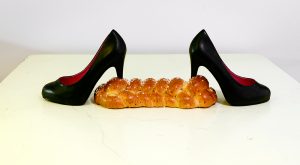
Even though the theme of inner life is sparse in popular literature, chick lit does not avoid the painful circumstances and experiences in women’s lives. However, it does not dwell on these circumstances and it offers them an offset, compensatory fulfilment in shopping and consumption, or a temporary numbing in alcohol or food. Chick-lit women typically possess a well-developed talent for self-delusion. The novels have a similarly unspoken awareness that some measure of fabrication and self-deception is necessary in order to tackle the modern woman’s life.
The clearest example of this is Swedish Martina Haag’s novel, Underbar och älskad av alla (och på jobbet går det också jättebra) (2005; Wonderful and Loved by All (and Work Is Great, Too)). It follows 30-something single Isabella’s increasingly desperate attempts to make life as an out-of-work actress live up to the ideal of being a successful woman with career and husband. She subscribes to the mantra of self-help literature, “taking control of your life”, but she can only accomplish this by means of an enormous dose of self-deception, which also involves serious deception of people around her. On the last page, the story (of failure) we have just read goes back to the beginning and starts again, with Isabella applying for a new and exciting job for which she is absolutely not qualified.
Martina Haag’s novel lacks the vitality of language and quick-witted humour that are prerequisites for the reader to accept the genre’s superficiality as premise, and because of this, it unintentionally reveals the confusion and sense of loss in the life of a female singleton.
Sparkling Writing
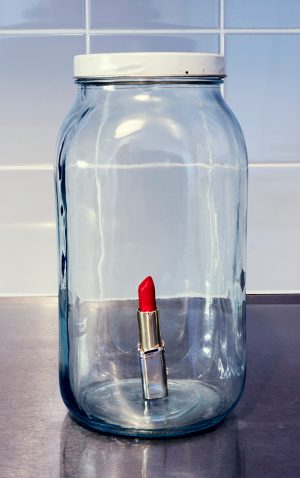
Generally, it must be said that the genre’s ‘trivialisation’ of emotional life is done with an infectious humour and burlesque tone. The existential angst is conjured up, as it were, by language, e.g. Bridget Jones’s aforementioned comment about the lonely woman being eaten by an Alsatian dog. So appalling, so tasteless an image that the reader…laughs! The sparkling language of chick lit has a disarming effect. The jauntiness, self-irony, and rashness take the sting out of the often painful situations. With its quick wit and by the outspoken and feisty way in which the women talk about themselves, the writing represents a transcending of the frustrations involved in the woman’s role. It creates a form of dignity in the chaos of the typical chick-lit world.
The Clowns of Womanhood
The chick-lit women are the clowns of womanhood. “The funny girls, who make jokes about how stupid, and ugly, and useless they are”, to quote a Danish book on the periphery of chick-lit, Michael Laudrups Tænder (2008; Michael Laudrup’s Teeth). Chick lit novels are full of stories about women who mess up. Stories about loo paper fluttering out of trousers, about a huge tuft of seaweed suddenly sticking itself to a bikini-clad crotch, about the large stool inadvertently left floating in the toilet bowl… All these agonising and funny episodes, which have their own uncontrollable life, undermine the heroine’s attempts to live up to the perfect ideal of the women’s magazines. And undermine her integrity. Chick-lit women see the unruliness of body and gender as a violation. It is as if they are in constant danger of attack from gender. They might well clown around with it and make a joke of gender, but they are nevertheless also the butt of this joke. Any deviation from the prevailing ideal of a woman is felt as a humiliation and everything, therefore, centres on displaying a perfect facade.
One may suggest that there is a form of rebellion against the role of the perfect women included in this floundering, i.e. the imperfections and the loss of control, written in a kick-ass language! The lack of willpower and discipline (vis-à-vis food, men, alcohol, cigarettes, clothes, scratch cards) on constant display has presumably given many female readers momentary release from the pressures exerted by society’s picture of the perfect woman – without this release causing them to feel a loss of dignity. The real strength of chick lit lies in the resilience of its language.
Being Nynne Is Not Fun!
Reading about Nynne is fun. Being Nynne is not fun! One may thus sum up the essence of chick lit. If you resist the seduction of the language and the humour, the genre proposes an ambiguous and rather alarming picture of young women’s perception of the world. It shows that their gender role is still an overwhelmingly major part of their self-image, and that anxiety about not finding a man is huge. It shows that there rests perpetual pressure on women to perfect their bodies. It shows that eating disorders, semi-alcoholism, and loneliness are rampant. The realism of all these features can be confirmed by simply reading the newspapers. In that light, it is difficult to agree with the idea that chick lit gives a misleading picture of modern women’s lives. At the same time, as a popular literary genre between pink covers, it clearly does not acknowledge the problems described, nor does it offer any usable interpretation of them. Learn to live with your ambivalences and have a bit of a laugh about it all! That is the message.
Beyond Chick Lit
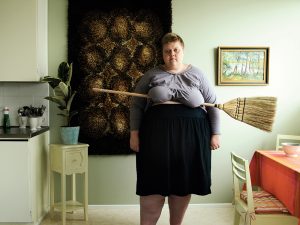
Chick lit has been seen as light reading’s shot at an interpretation of young women’s perception of gender and womanhood in the 1990s and the 2000s. The popular fiction which has, since about 2011, taken over the chick-lit position on the bestseller lists – the erotic novel and the relationship thriller – once again offers some new and time-specific takes on modern female identity. Like chick lit, these novels deal with female longings for love but they are also increasingly pessimistic with regards to its possibility of fulfilment in an equal relationship between a woman and a man.
Fiction
- Candace Bushnell: Sex and the City. Grand Central Publishing, 1996.
- Candace Bushnell: Four blondes. Grove/Atlantic, 2000.
- Helen Fielding: Bridget Jones’ Diary. Picador, 1996.
- Martina Haag: Underbar och älskad av alla (och på jobbet går det också jättebra). Piratforläget, 2005.
- Hanne Hedetoft: Ellens elevator. Rosinante, 2003
- Kajsa Ingemarsson: Små citroner gula. Forum Bokforläg 2004. Yesterday’s News, Amazon Kindle, 2013
- Henriette Lind, Lotte Thorsen, Anette Vestergaard: Nynnes dagbog 1. Aschehoug, 2000
- Maise Njor, Camilla Stockmann: Michael Laudrups tænder. Gyldendal, 2005
- Siri Østli: På høye hæler over Grønland. Cappelen Damm, 2009
Non-Fiction
- John Ezard: Bainbridge tilts at ‘chick lit’ cult. The Guardian, 24.08.2001
- Suzanne Ferriss & Mallory Young (red.): Chick Lit. The New Woman’s Fiction. Routledge, 2006
- Stephanie Harzewski: Chick Lit and Postfeminism. University of Virginia Press, 2011
- Lisbeth Larsson: “Från Rådgifvare till Chick-lit. Den romantiska berättelsens förändringar”. Den litterära textens förändringar Stefan Ekman, Mats Malm og Lisbeth Stenberg (red.). Litteraturvetenskapliga institutionen, 2007
- Lisbeth Larsson: Romantikerna bryter upp. DN.se, 20.01.2007
- Martine Ramskov Gjede: Den kvindelige selviscenesættelse og kønsforhandling i nyere feministiske genrehybrider. Bacheloropgave, Institut for Nordiske Studier og Sprogvidenskab, 2008
- Imelda Whelehan: The Feminist Bestseller. Palgrave Macmillan, 2005

